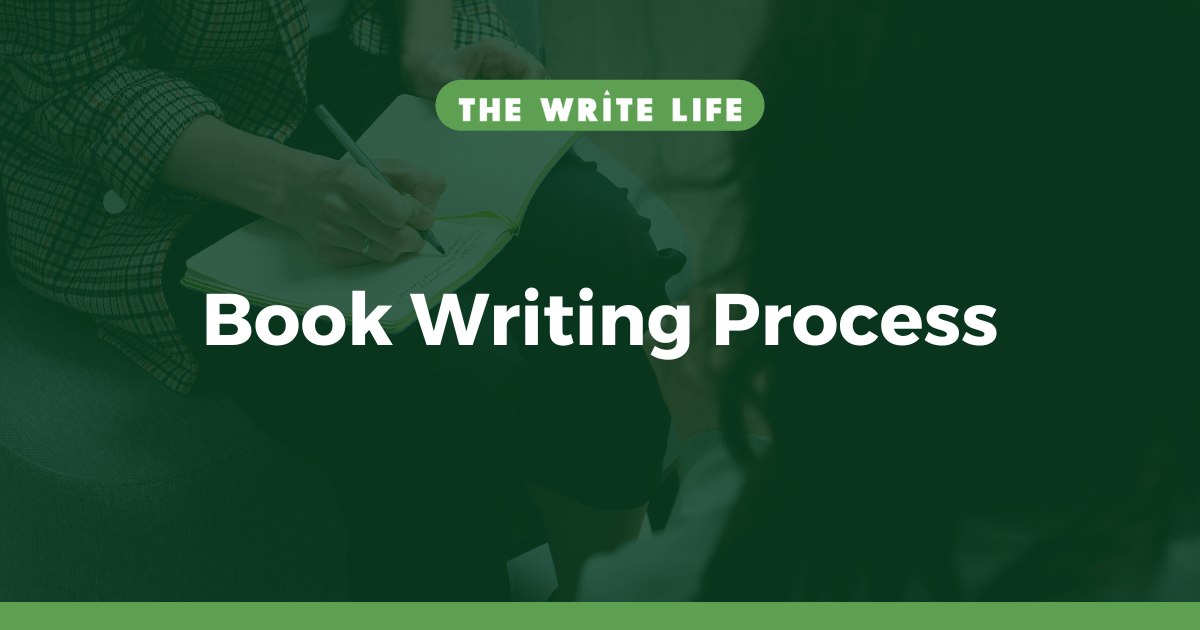No products in the cart.
Work From Home
Ebook Writing Course of
Writing a book is an art form, and that means that there’s not one right way to do it—it’s going to look different for everyone, and as long as someone’s method works for them, it’s fine.
That said, if you’re a new writer looking for advice, this can make a project as big as a novel feel daunting. How do you even start to tackle a project that might be a few hundred thousand words long before it’s over?
If you’re a painter, you need to learn about different methods and techniques and try each to see which resonates with you—you learn how people have been doing it, because that gives you a foundation of information to work with. With that foundation, you’ll eventually gain the experience necessary to use what works for you and leave the rest.
It’s the same with writing. While you’ll eventually reach a point where you’ve got a book writing process which works for you, you may need to try a few different methods before striking gold. In this article, I’ve got five methods for you to add to your toolkit—feel free to mess with them as you need to so they’re effective for your project’s needs.
For each process, I’m going to talk about how it works, who it might be helpful for, and what sorts of tweaks you could make to give you an idea of how to customize these processes. But before we get into that, I want to talk about brainstorming and outlining.
Brainstorm and outline
Before you start actually writing your book, you’re going to want some idea of what the book is about. You’ll probably need to know:
– who the characters are
– where the characters are
– what the characters want (at least in the beginning)
& what the book is about (what big themes or ideas you intend to explore).
Some writers have this more or less all in their heads before they sit down to write, but I recommend jotting it down. Here are a few ways you might brainstorm before you start getting into the meat of your novel:
1. Mind map
Write a word in the center of a piece of paper related to your novel—it might be a character’s name, the setting, an idea, a theme, whatever. Draw two lines away from that word and write the first related thing that comes to mind, and do this until the page is full of characters, plot points, settings, phrases, and so on which correspond to your novel.
2. Stream of Consciousness
Set a timer for two, five, or ten minutes (whatever works for you) and write down literally whatever comes to mind. If you’re writing ‘I don’t know what to write and I think this brainstorming idea is terrible,’ that’s cool. Keep going until you’ve got enough to work with.
How do you know you’ve got enough to work with?
There’s not a hard rule, but basically, you’ve got enough to work with when you feel that the brainstorming process is done. You feel ready to start writing. You may need to revisit the brainstorming process while you’re writing to work out plot holes or sticky spots, and that’s fine! This is just to help you get started with a solid foundation.
And once you’ve got that foundation, you’re ready to write your book, and that’s where these five processes come in.
The Snowflake Method
Randy Ingermanson’s Snowflake Method is built on the idea that “good fiction doesn’t just happen, it’s designed.” The Snowflake Method forces you to start small and expand outwards until you’ve got a fully fledged novel. This process is outlined in detail on Ingermanson’s website, but we’ll go over a brief summary here.
Steps 1-7: Synopsis and Character Description
You start with an elevator pitch for your novel. If you’re not sure how to write one, look up one-sentence novel descriptions to get a feel for how they should look—they’re basically a summary intended to sell the listener on the story.
Steps 8-9: Outlining
Here, Ingermanson instructs to use a spreadsheet to outline your novel. You’ll use one line for each scene. Then, you take this information and write out a narrative description—basically, you’re converting the spreadsheet to a word document and writing out how the book plays out. He says this step is optional.
If you’re using software like Scrivener, there might be a feature built-in for you to list your scenes. Otherwise, Google Sheets is free.
Step 10: Drafting
Draft the novel! You might need to take breaks to edit the design documents you’ve been creating as things change, and that’s okay. Ingermanson explains that these design documents will have to be edited if you’re doing well—as your ideas develop and change, you’ll have to reflect those changes in the pitch, character synopses, and plot summary.
The Snowflake Method is great because it offers structure for the process without enforcing structure on your book itself. You can use this process with whichever plot structure you like, and at the end of it, you’ve got the documentation you’ll need to sell this book to publishers or market this book on your own as an indie author.
If you’re going to tweak this method, tweak the time frames—Ingermanson lists how long each step should take (which is hugely helpful for keeping creative momentum going), but if you need to take more or less time on a given step or if you need to take breaks between steps, no one’s stopping you.
Discovery Draft
A discovery draft is what a lot of writers might refer to as ‘pantsing.’ For this, you might or might not have much idea of what you’re going to write about—if you have anything written down, it’s probably just a premise or starting point: a character in an interesting setting, a specific fight, whatever.
The idea of a discovery draft is that you sit down and draft the novel as quickly as possible, figuring out details about characters, plot, and all that as you go. Some discovery drafters will edit as they go—I recommend that you don’t, but do make notes or keep a separate document going with the changes that come to mind as you work.
This allows for a lot of creative momentum, because you’re discovering the story as you go—it’s exciting. The downside is that because you might not know where you’re going, you may get stuck. If this happens, I recommend slapping down a note that says “GOT STUCK HERE” and jumping to the next scene. So if you don’t know what the next scene is going to be, that’s okay. You can pause and brainstorm to figure out what happens next, or just decide what would be the worst possible (and realistic) thing to happen to these characters at this time and go with that.
You’ll end up with a first draft that’s also an outline and also a character sheet. Once you’ve finished this draft, go through and identify character arcs and plot arcs and determine how to honor them. Almost none of your discovery draft is likely to end up in the finished product, but that’s true of any first draft.
Bullet point outline
A bullet point outline is a great option if you’re looking for something super flexible, and it’s the foundation for many other methods you’ll see. Basically, this is the spreadsheet step in the Snowflake Method.
On a piece of paper, in a word document, or on a spreadsheet—doesn’t matter—you’ll dedicate a line to each plot point.
If you want a super detailed outline, you might write each beat as its own line. If you do this, I recommend organizing your outline so that each chapter has its own heading, just to keep everything streamlined and easy to refer to. You can use highlighters or different-colored fonts to color-code based on character, subplot, or whatever you desire.
If you don’t want to get that detailed, you can write down the major plot points in your novel and forget the rest.
As long as you have enough information to feel comfortable drafting, you’re good to go. A detailed outline can help save time in the drafting process, but a loose outline might make you feel a little more free to change things up as you draft—if you get lost along the way, skip along to the next beat, and figure out how to close that gap when you revise.
Start at the end
Have you heard of Sagging Middle Syndrome? It describes the phenomenon whereby you breeze through the setup of your novel, then stall out in the middle—around the middle of act two, it becomes impossible to reach the climax. Characters hang out doing unrelated shenanigans until the climax comes to rescue them (and the reader).
This is a pretty natural thing to happen, especially in a first draft. If it’s a particularly tough struggle for you, try starting your novel at the end. Where do your characters end up? Who wins, and what happens as a result of that? Knowing how the story ends makes it easier to figure out how to get there.
Another variant of this method is starting with the climax. If you’re the type of author to get an idea for a really cool climax before you think of anything else, just write that climax down. Yes, it’ll probably change dramatically as you rework it—this is inevitable.
After you’ve written the end or the climax or whichever scene you’ve decided to start with, ask yourself the following questions:
– who are these characters?
– how did they get here?
– who ultimately wins in this confrontation?
You can keep working backward, or you can pause and switch to a bullet outline—whatever works for you.
Storyboard Method
If you’re a visual learner, this might be your ticket.
Storyboards are commonly used for visual mediums like comic books, TV, or movies, but you can use them for novels, too. Use index cards to draw out the scenes you want to have happen in your novel and tape them to a piece of posterboard, the floor, the refrigerator, or your bedroom wall. Instead of drawing the scenes, you could also write them out using short sentences or descriptions.
Again, if you want to use color-coding or some other unique marker to pick out characters and subplots, go for it! If not, cool. This method is great because it allows you to literally see missing spots in your plot, and it allows you to literally pick up and move scenes and see what they’d look like in other parts of the story.
Some writing software like Scrivener has features which allow you to do this, so if you’re looking for a way to do this that saves some space, you might find that useful.
When you’ve got everything lined up the way you want it, take that information and put it into a word document. This will serve as a bare-bones first draft, which you can get straight into revising!


